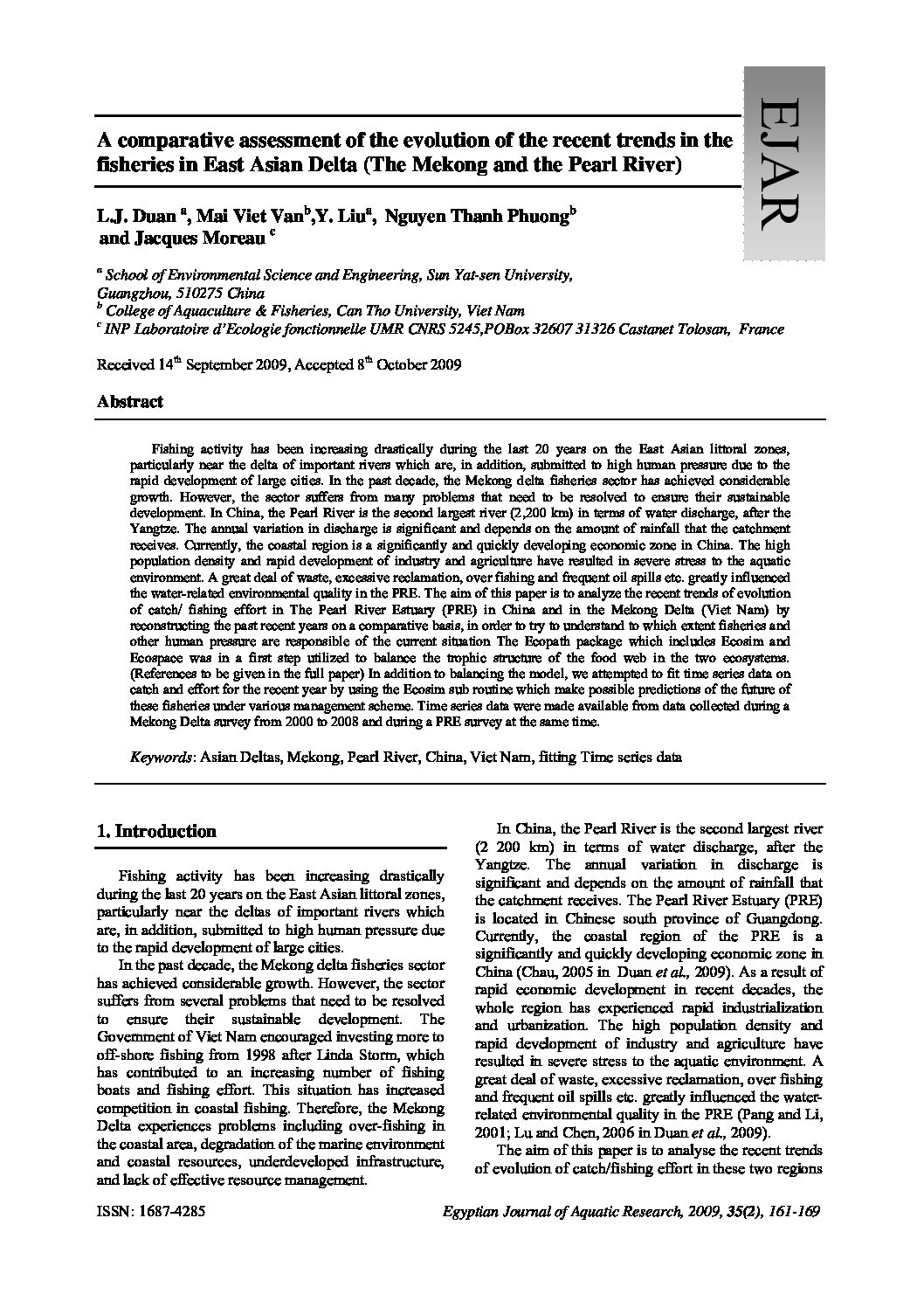Categories
vol-35Estimation of metal pollutant levels in bottom sediments from
Rosetta to Damietta promontories
Suzanne E.O. Draz*, Hoda H. Ahdy**, Mona Kh. Khalil* and Azza Khaled**
*Geological Lab. and **Pollution Lab.
Institute of Oceanography and Fisheries, NIOF, Alexandria, Egypt
Received 16th April 2009, Accepted 7th May 2009
Abstract
The concentration of heavy metals; Cd, Cu, Fe, Mn, Ni, Pb and Zn, total organic carbon and carbonate content
were studied in sediment of twenty one locations from continental shelf between Rosetta to Damietta promontories
during 2008. The mean grain size ranged between medium sand and very fine silt. The TOC ranged between 0.15% and
1.79 % while total carbonate varied between 7% and 85 %. The total metals concentration fluctuated between 0.26 -1.51
µg g−1
for Cd, 8.52 – 46.67 µg g−1 for Cu, 942 – 15703 for Fe, 71- 956 µg g−1 for Mn, 3.23 – 65.79 µg g−1
for Ni, 13.59 –
43.7 µg g−1
for Pb, and 33.03 -119 µg g−1 for Zn. For various metals different normalizing methods were used,
enrichment factor (EF)crustal, contamination factor (Cf), metal pollution index (MPI), as well as geoaccumulation index
(Igeo), to compensate the influence of natural variability in sediment mineralogy. The results indicate that Cd and Cu
still much lower than ERM, while Pb and Zn levels never exceeded the ERL revealing that there is no adverse effect on
biota. While, Ni level exceeded ERM by of 29% of the investigated sites indicating that this metal could cause an
adverse effect on local community.
Keywords: Heavy metals, Grain size, Sedimentation, Rosetta and Damietta, Degree of contamination







